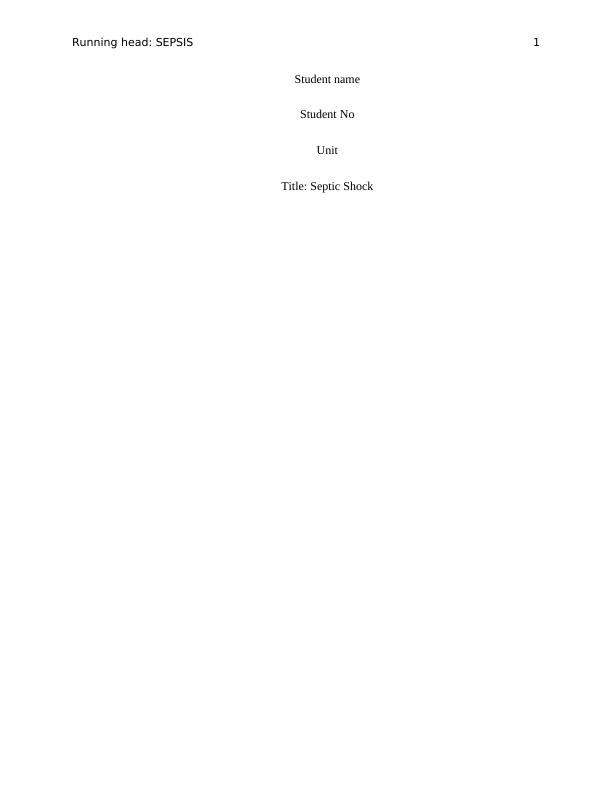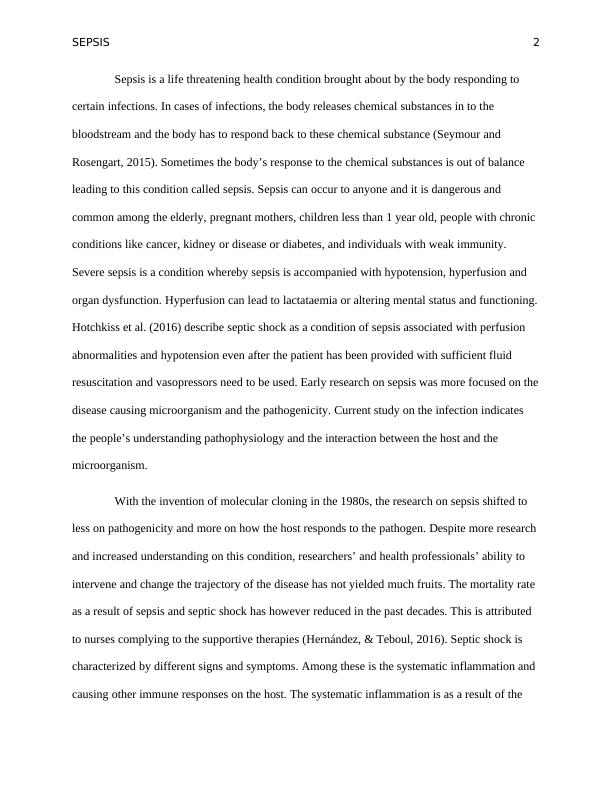Septic Shock
For this essay, students are required to select a case scenario related to the clinical deterioration of a patient and discuss signs/symptoms, priority problem, nursing interventions, and psychosocial issues.
10 Pages2843 Words421 Views
Added on 2022-12-01
About This Document
Sepsis is a life-threatening condition caused by the body's response to infections. This article discusses septic shock, its symptoms, diagnosis, and treatment options. It also highlights the importance of early intervention and the impact of septic shock on vital organs. Find study material and assignments on septic shock at Desklib.
Septic Shock
For this essay, students are required to select a case scenario related to the clinical deterioration of a patient and discuss signs/symptoms, priority problem, nursing interventions, and psychosocial issues.
Added on 2022-12-01
ShareRelated Documents
End of preview
Want to access all the pages? Upload your documents or become a member.
Understanding Septic Shock: Causes, Symptoms, and Diagnosis
|10
|2960
|36
Septic Shock: Symptoms, Nursing Interventions and Priority of Care
|11
|2839
|202
Nursing Interventions for Sepsis and Infection: A Case Study
|13
|2469
|118
Septic Shock Management
|12
|2815
|120
Pathophysiology of UTI and Sepsis
|7
|1660
|419
Urinary Tract Infection Case Scenario
|7
|1511
|335



